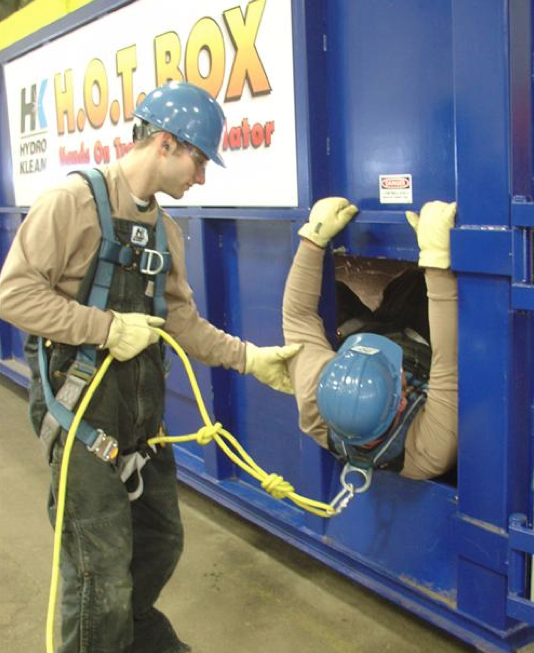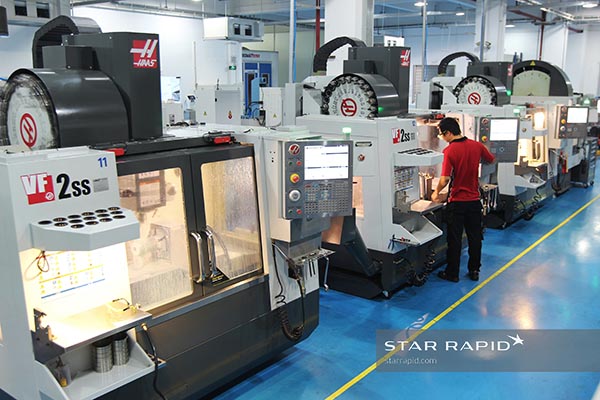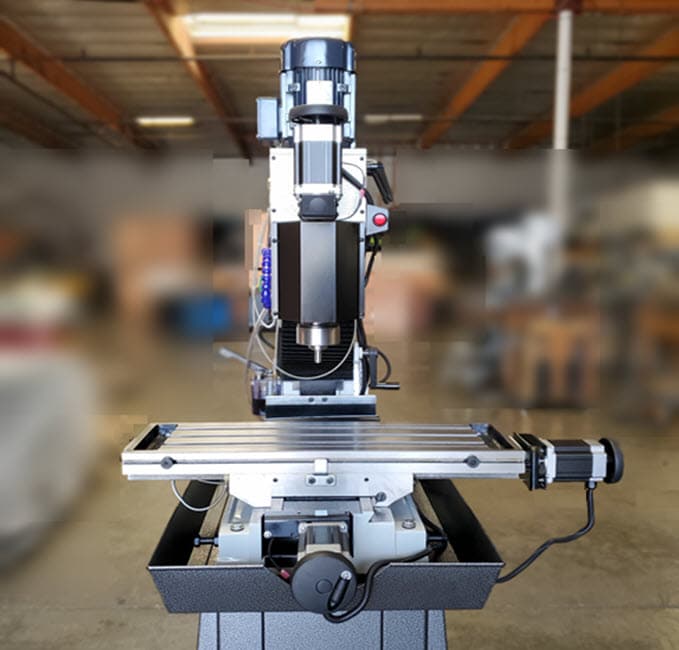Table of Contents
- Are CNC Mills Confined Spaces? – Exploring the Risks and Regulations
- Frequently Asked Questions
- Are CNC Mills Confined Spaces?
- What are the Hazards of Working in a Confined Space CNC Mill?
- What are the Requirements for Working in a Confined Space CNC Mill?
- What are the Safety Precautions for Working in a Confined Space CNC Mill?
- What are the Legal Requirements for Working in a Confined Space CNC Mill?
CNC mills are a vital part of modern manufacturing, and they are used to create everything from automotive parts to medical devices. However, there is a growing concern about whether or not these machines are considered confined spaces. Confined spaces are areas that are difficult to enter and exit, and they often have limited ventilation. In this article, we’ll explore whether or not CNC mills fit this definition and what that means for workers who operate them.
As with any machine, there are inherent risks involved in operating a CNC mill. These risks include the potential for injury from moving parts and the release of harmful materials. However, the question remains as to whether or not these machines qualify as confined spaces. By examining the definition of confined spaces and the features of CNC mills, we can gain a better understanding of the potential hazards and how to mitigate them.
Yes, CNC mills can be considered confined spaces. CNC mills are machines that require operators to work within the machine’s enclosed space, which can pose a risk of injury or harm. It is important for operators to receive proper training and follow safety guidelines when working with CNC mills to prevent accidents and ensure a safe working environment.
Are CNC Mills Confined Spaces? – Exploring the Risks and Regulations
What is a Confined Space?
Confined spaces are areas with limited access and exit that are not designed for continuous occupancy. They pose a risk of injury or death due to hazards such as lack of oxygen, toxic gases, fires, explosions, or entrapment. Examples of confined spaces include tanks, hoppers, silos, pits, tunnels, sewers, and vessels.
Regulations
In the United States, the Occupational Safety and Health Administration (OSHA) has established standards for confined spaces in general industry (29 CFR 1910.146) and construction (29 CFR 1926.1200). These standards require employers to identify, evaluate, and control the hazards of confined spaces, train employees on the risks and procedures, and have rescue plans in place.
Are CNC Mills Confined Spaces?
CNC (Computer Numerical Control) mills are machines that use computer software to control the movement of cutting tools to shape and finish metal, wood, or other materials. They typically consist of a bed, a spindle, a tool changer, and a control panel. While CNC mills do not fit the traditional definition of confined spaces, they can present similar risks due to their size, shape, and configuration.
Risks of CNC Mills as Confined Spaces
Lack of Ventilation
CNC mills generate a lot of dust, chips, and coolant mist that can accumulate in the surrounding area and reduce the oxygen level. This can lead to respiratory problems, dizziness, and fatigue. Proper ventilation and filtration are essential to maintain a safe atmosphere.
Tight Spaces
CNC mills often have narrow aisles or workstations that require operators to squeeze in and out. This can cause ergonomic injuries such as strains, sprains, and back pain. Employers should provide adequate space and equipment to allow for comfortable and safe work.
Electrical Hazards
CNC mills use high-voltage electricity to power their motors and controls. This can pose a risk of electrocution, fire, or explosion if the wiring, grounding, or insulation is faulty or damaged. Regular maintenance and inspections are crucial to prevent electrical accidents.
Benefits of CNC Mills
Precision
CNC mills can produce parts with high accuracy and repeatability, which is essential for industries such as aerospace, medical, and automotive. They can also perform complex shapes and patterns that would be difficult or impossible to achieve manually.
Efficiency
CNC mills can operate continuously and automatically, reducing the need for manual labor and increasing productivity. They can also optimize tool paths and speeds to minimize waste and cycle time.
Versatility
CNC mills can work with a wide range of materials and geometries, from soft plastics to hard metals, from simple holes to intricate contours. They can also handle multiple operations in one setup, such as drilling, tapping, and milling.
CNC Mills vs. Other Machines
CNC Mills vs. Manual Mills
Manual mills require skilled operators to control the movement of cutting tools by hand, using cranks or levers. They can be slower, less precise, and more prone to human error than CNC mills. However, they can handle larger workpieces and are often more affordable.
CNC Mills vs. Lathes
Lathes are machines that rotate a workpiece and shape it by cutting, drilling, or sanding. They are typically used for cylindrical or symmetrical parts. CNC mills can handle more complex shapes and contours, as well as multiple axes of motion. However, lathes can be faster and more efficient for certain tasks.
CNC Mills vs. 3D Printers
3D printers are machines that create three-dimensional objects by layering materials such as plastic, metal, or resin. They are often used for prototyping, small batches, or custom designs. CNC mills can produce larger and stronger parts, as well as more precise and detailed ones. However, they require more setup time and material waste.
Frequently Asked Questions
Are CNC Mills Confined Spaces?
Yes, CNC mills can be considered confined spaces. A confined space is defined as a space that has limited entry and exit points, is not intended for continuous occupancy, and is large enough for a person to enter and perform work. CNC mills meet this definition because they have limited access points, are not intended for continuous occupancy, and operators must enter the machine to perform work.
However, not all CNC mills are considered confined spaces. To be classified as a confined space, the space must also have the potential to contain a hazardous atmosphere or pose a physical hazard to the worker. This will depend on the specific design and use of the CNC mill, as well as the materials and processes used in the manufacturing process.
What are the Hazards of Working in a Confined Space CNC Mill?
Working in a confined space CNC mill can pose various hazards to workers. The primary hazard is the potential for a hazardous atmosphere to develop inside the machine. This can occur due to the accumulation of dust, fumes, or vapors from the manufacturing process. These hazardous atmospheres can lead to respiratory problems, asphyxiation, or explosion and fire.
In addition to the potential for hazardous atmospheres, working in a CNC mill can also pose physical hazards. Operators must navigate through a small and confined space while performing their work, which can increase the risk of injuries from slips, trips, and falls. Machinery inside the CNC mill can also pose a risk of entanglement, crushing, or severing of limbs.
What are the Requirements for Working in a Confined Space CNC Mill?
To work in a confined space CNC mill, workers must receive specialized training on the hazards of confined spaces and the necessary safety procedures. Employers must also implement a written confined space program that outlines the procedures for working in confined spaces, including entry and exit procedures, ventilation requirements, and emergency rescue procedures.
In addition to the training and written program, employers must also ensure that workers have the necessary personal protective equipment (PPE) to safely work in a confined space CNC mill. This may include respiratory protection, protective clothing, and fall protection equipment.
What are the Safety Precautions for Working in a Confined Space CNC Mill?
When working in a confined space CNC mill, there are several safety precautions that workers should follow to minimize the risk of injury or illness. These include:
- Conducting a hazard assessment before entry
- Testing the atmosphere inside the machine before entry
- Using proper ventilation to control hazardous atmospheres
- Wearing appropriate PPE
- Using lockout/tagout procedures to prevent accidental machine startup
- Having a standby worker outside the machine to monitor workers inside
- Having an emergency rescue plan in place
By following these safety precautions, workers can minimize the risk of injury or illness when working in a confined space CNC mill.
What are the Legal Requirements for Working in a Confined Space CNC Mill?
The Occupational Safety and Health Administration (OSHA) has established legal requirements for working in confined spaces, including CNC mills. These requirements include:
- Having a written confined space program
- Providing training to workers on confined space hazards and safety procedures
- Conducting a hazard assessment before entry
- Testing the atmosphere inside the machine before entry
- Using proper ventilation to control hazardous atmospheres
- Providing appropriate PPE
- Having a standby worker outside the machine to monitor workers inside
- Having an emergency rescue plan in place
Employers who fail to comply with these legal requirements may face citations and penalties from OSHA. It is essential for employers to ensure that they are in compliance with all OSHA regulations when working in a confined space CNC mill.
In conclusion, while CNC mills may not fit the traditional definition of a confined space, they do present certain hazards that operators need to be aware of. These machines can generate a significant amount of heat, dust, and debris, which can pose a risk to the health and safety of workers. Additionally, the intricate nature of these machines means that operators may need to work in close proximity to moving parts, which can increase the risk of injury.
Despite these risks, CNC mills remain an essential tool in modern manufacturing. With proper training and safety protocols in place, workers can operate these machines safely and effectively. By understanding the potential hazards associated with CNC mills and taking steps to mitigate these risks, manufacturers can continue to produce high-quality products while keeping their workers safe.
Request a quote today!
[contact-form-7 id="1578" title="Contact form"]
Please compress the file into a ZIP or RAR file before uploading. Alternatively, send through your RFQ by email.
enquires@unitymanufacture.com





